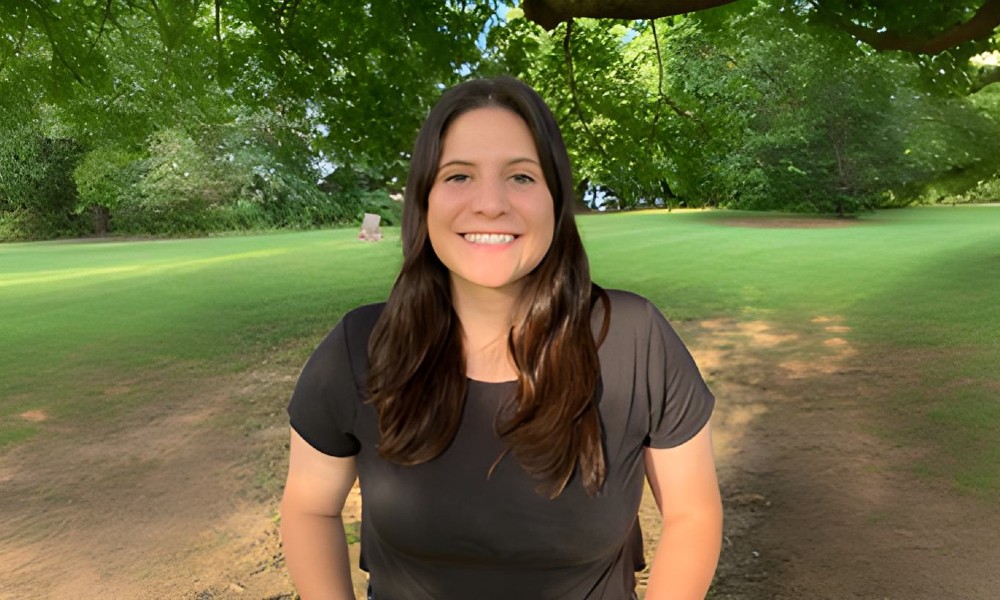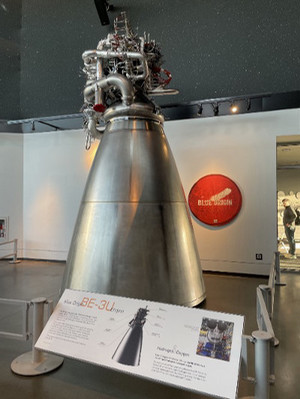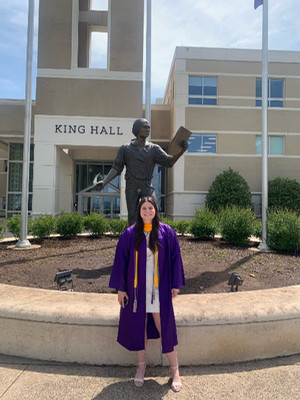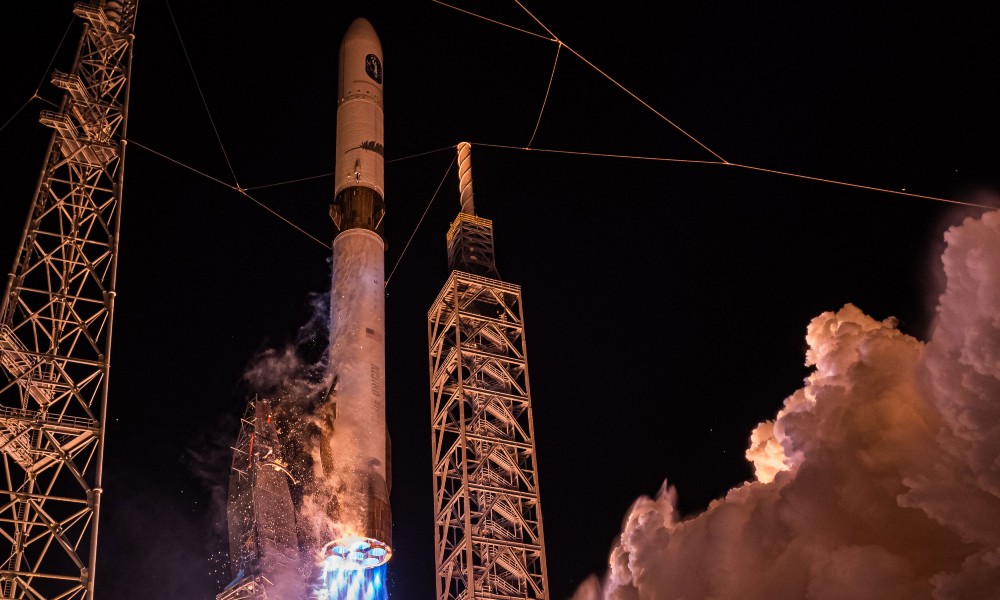Chelsea Lang: From ISAT to Aerospace
The journey of a JMU alumna
News
SUMMARY: Chelsea Lang (’23) discovered her strengths in JMU’s ISAT program, where exploration and determination shaped her confidence. Today, as a propulsion engineer at Blue Origin, she applies that mindset to modeling and analyzing how engines will perform in flight.
Chelsea Lang (’23) never imagined she’d end up working on rockets. At first, she wasn’t even sure she belonged in a technical major. But through JMU’s Integrated Science and Technology program, she built the confidence and skills that launched her career in the aerospace industry.

Today, Lang is a propulsion engineer at Blue Origin, where she runs thermal and secondary flow analyses on the BE-3U. This vacuum-optimized engine powers the upper stage of the New Glenn rocket. Named for astronaut John Glenn, the heavy-lift orbital rocket is expected to play a significant role in future government and commercial missions, ranging from satellite deployment to deep-space exploration.
Her ISAT experience taught her to think big – and space, she says, is the biggest system of all. That mindset has guided her from JMU classrooms to one of the most ambitious rocket programs in the world.
Lang didn’t arrive at JMU planning to design engines. “I wasn’t sure what I wanted to do,” she said. “I liked STEM and cared about environmental issues, but I wasn’t stellar at math, so I didn’t think I’d succeed in the majors I found interesting.” Then she found ISAT.
“It had the best of both worlds, some technical, engineering-focused classes and others that were less math-intensive,” she said. “It gave me the confidence to explore, and eventually, I realized I was gravitating toward the more technical side. ISAT let me discover what I was good at and adjust without having to change majors."
In her first semester, Lang took a biotechnology course with ISAT professor Dr. Chris Bachmann. “The topics in that class were brand new to me, but Dr. Bachmann taught through storytelling, and it made learning feel really easy,” she said. “I genuinely looked forward to going to class. That’s when I knew I chose the right major and couldn’t imagine doing anything else.”
That spark turned into a defining moment in Thermodynamics, a course known for challenging even the most confident students. “ISAT 310 was the hardest class I’ve ever taken,” Lang said. “But it’s also the class that made me want to be an engineer.”
Initially, she struggled with the workload. “I spent hours on problems that didn’t always lead to high homework grades,” she said. “But rather than getting discouraged, I grew more determined.” With support from her ISAT professor and mentor, Dr. Karim Altaii, Lang developed a deeper passion for problem-solving. “Over the semester, I started to love the type of thinking thermo required. By the end, I was craving more technical challenges.”
 Altaii’s encouragement proved pivotal. “He told me he thought I’d make a great engineer,” Lang recalled. “That one sentence completely changed my trajectory. I can’t thank him enough for the many conversations we had about grad school, engineering, and jobs. He was always there to give an encouraging word.”
Altaii’s encouragement proved pivotal. “He told me he thought I’d make a great engineer,” Lang recalled. “That one sentence completely changed my trajectory. I can’t thank him enough for the many conversations we had about grad school, engineering, and jobs. He was always there to give an encouraging word.”
With Altaii's guidance, Lang applied to the University of California, Berkeley, where she earned a master’s in mechanical engineering – a program she initially feared might be out of reach. “Coming from a non-traditional background, I expected grad school to be intimidating,” she said. “But I quickly realized that ISAT gave me the confidence to figure things out.”
That confidence carried Lang into high-pressure environments beyond the classroom. She completed a National Science Foundation-funded internship and spent a summer at the National Energy Technology Lab, where she learned how classroom concepts translated, sometimes unexpectedly, into practice. “Some concepts I loved in class didn’t excite me in the field, and vice versa,” she said. “That kind of insight is hard to get from lectures alone.”
|
“Capstone was a huge asset during my job search. Companies want to see that you know how to be part of a team working toward a shared goal. Spending two years doing exactly that in ISAT gave me a big advantage.” — Chelsea Lang |
Lang’s journey also highlights the value of her capstone project, which provided vital experience in teamwork, navigating challenges, and collaborating across various roles.
Those experiences, along with her postgrad internship at Space Kinetic, prepared Lang for her role at Blue Origin, where she develops predictive models of engine components, analyzes their behavior during flight, and recommends design improvements. Her work spans combustion devices, turbomachinery, and thermal systems, requiring coordination across engineering, manufacturing, testing, and leadership teams.
“ISAT taught me how to zoom in and out on a problem,” she said. “Yes, I’m focused on thermal analysis, but my suggestions also need to consider cost, weight, manufacturability, and testing. Systems thinking is something ISAT emphasized early and often.”

New Glenn at liftoff during the NG-1 mission on Jan. 16, 2025.
Lang was part of New Glenn’s first rocket launch on Jan. 16, 2025. The mission reached orbit, marking Blue Origin’s first successful orbital rocket launch and highlighting the high-stakes nature of her work.“It was a moment I’ll never forget,” she said.
Lang encourages current ISAT students to take full advantage of the program’s flexibility. “Follow your interests,” she said. “You’re not locked into one track. One of the best things about ISAT is how broad your foundation is, and that can be leveraged in a million different ways.” For Lang, that foundation carried her all the way from ISAT to the frontier of space exploration.
